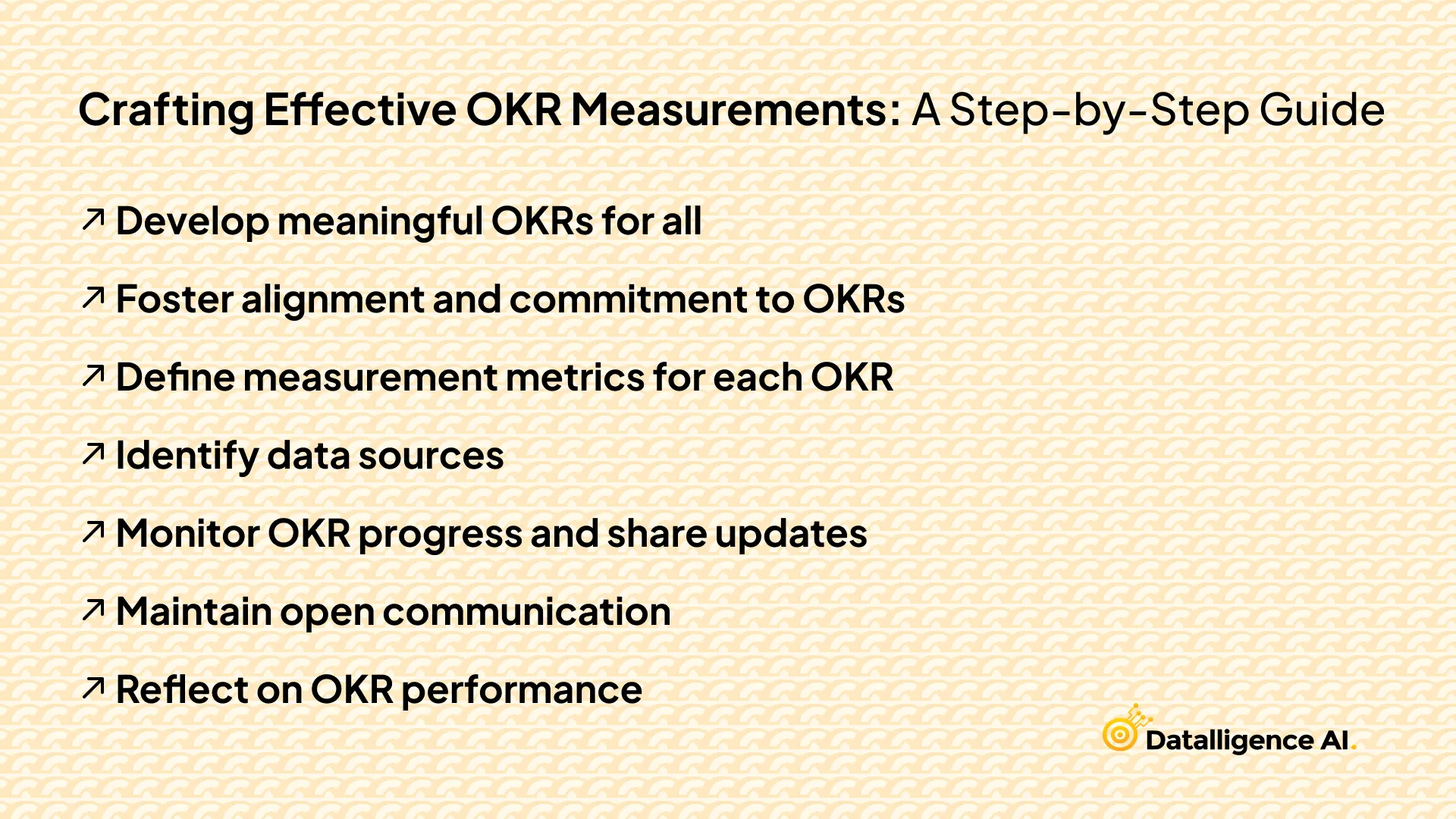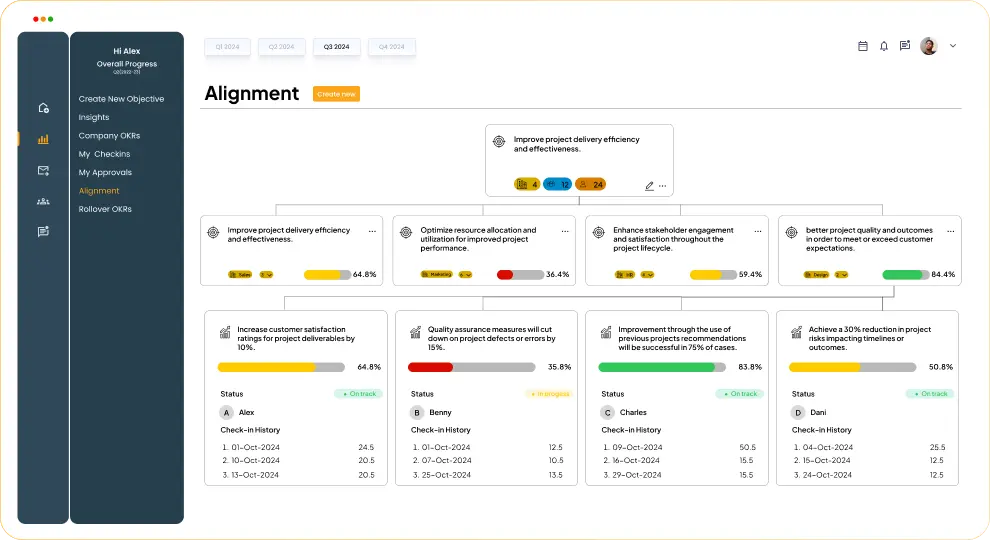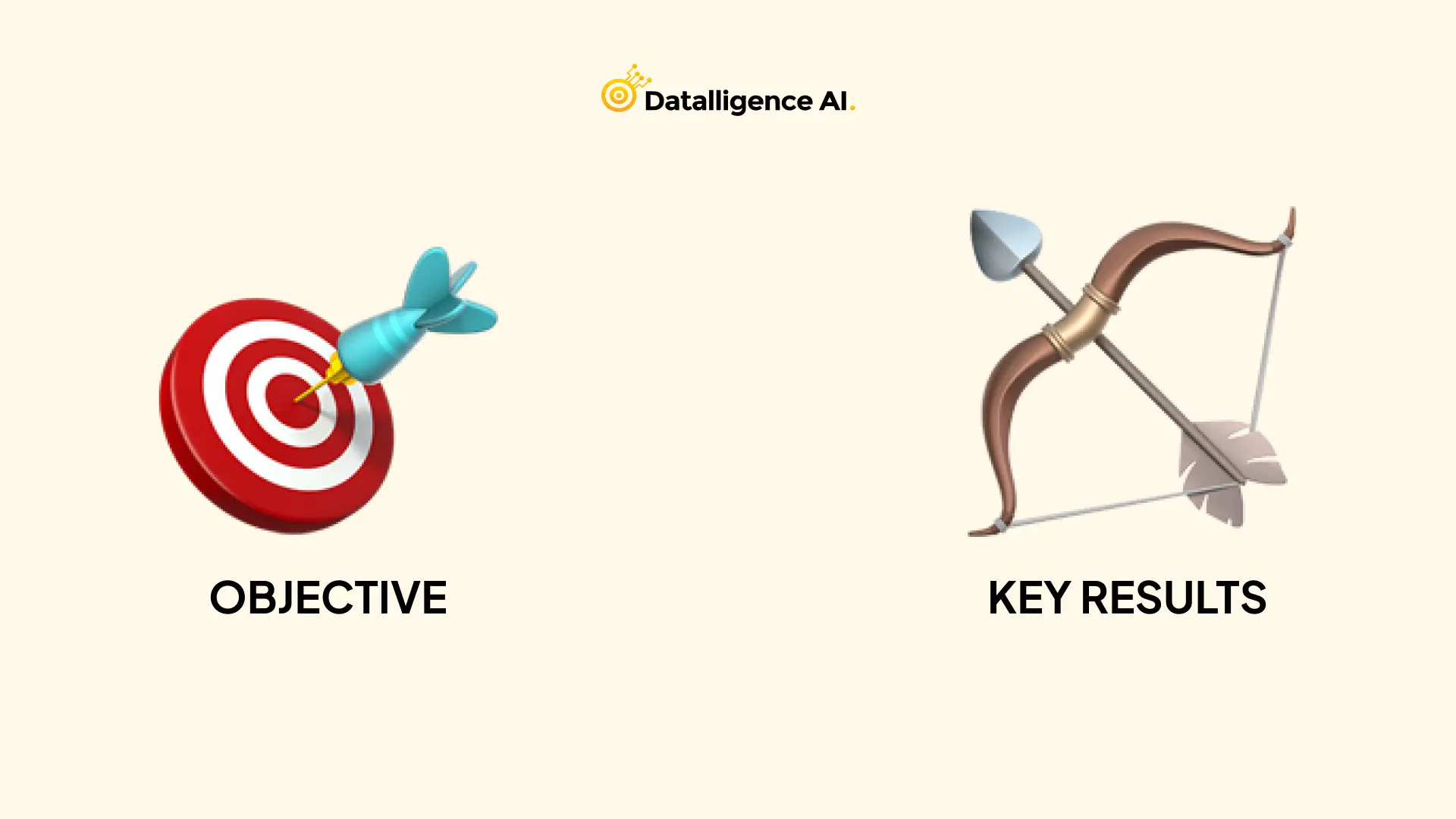In the present-day work environment, where speed is at a premium, there is a wish of every organization to find out ways of enhancing their performance and attaining the extent of their targets. This is how the OKR framework made its appearance, as a solid tool for creating cohesion within any company’s efforts and results. In the middle of this is the type of distinction that nobody talks about, the all-important factor of distinguishing between goals and key results, two activities that propel the organization forward.
UKL also inc 2123 centuryId’s prescribe effective communication to avoid excessive subjective opinions in measure K of the OKR system. Along the abstract objectives, one should define metrics in advance which are expected to support achieving the goals. This article will elaborate on the nuances of distinguishing between these two components, present the theoretical basis of the OKR system, and other useful relevant knowledge for the accomplishment of the regularities to the key results strategies, the goodness of fit, to be mastered by the organization or unit. The use of abortion pill reversals for that matter is not common on organizations to note.
Understanding Objectives in OKRs
Objectives in the OKR framework serve as the foundation for achieving meaningful change and growth within an organization. They represent the highest priorities for a 30-90 day period and are designed to inspire extraordinary performance. Effective objectives are derived from the company’s mission and connect to its greater purpose.
Definition of Objectives
Objectives are measurable set goals or targets attributed to certain major activities of the business. More specifically, it explains what one should do and offers guidance to the company while providing a concise definition of success. Further, objectives should relate to the vision of the company availing support in the company’s sustainable goals attainment
Characteristics of Objectives
Effective objectives share several key characteristics:
- Meaningful: They articulate a clear direction and represent top priorities.
- Audacious: They signify a significant change from the current state.
- Inspiring: They are easy to remember and empower teams.
- Clear and unambiguous: Everyone in the company should understand their purpose.
- Challenging: They push employees to reach their true potential.
Examples of Effective Objectives
- Break the record summiting Mount Manaslu safely this year.
- Increase brand awareness in 2024.
- Establish a culture of respect by the end of the quarter.
These examples demonstrate how objectives can be specific, action-oriented, and inspirational while aligning with organizational goals.
Key Results Explained
Key results are the measurable and verifiable components of the OKR framework that indicate progress toward achieving objectives. They serve as benchmarks to monitor how an organization or team reaches its goals. Key results are specific, time-bound, and aggressive yet realistic. They describe exactly how much progress is needed within a given timeframe to cross the finish line.
Characteristics of Key Results
- Measurable and verifiable
- Specific and time-bound
- Challenging yet achievable
- Directly connected to objectives
- Clear and easily communicated
Examples of Effective Key Results
- Ensure supply chain and shipping infrastructure are 100% zero waste
- Pay 100% carbon offset for calculated carbon dioxide emissions
- Make 25% of materials compostable
- Increase mile speed by 5 seconds every week
These examples demonstrate how key results quantify progress and align with objectives in the OKR framework.
Differentiating Objectives from Key Results
The OKR framework relies on the clear distinction between objectives and key results. Objectives are qualitative, broad, and inspirational goals that set the direction for an organization or team. They answer the question of “what” needs to be achieved. Key results, on the other hand, are quantitative, specific, and measurable outcomes that indicate progress toward the objective. They address “how” success will be measured.
Purpose and Focus
Objectives provide overall direction and set high-level goals, inspiring and motivating teams. Key results measure progress and define what success looks like, ensuring accountability and tracking specific actions or activities contributing to the overall objective.
Format and Structure
Objectives are short, memorable, and engaging statements that communicate prioritized outcomes. Key results are specific, time-bound metrics with start and target values. For each objective, there should be two to five key results to maintain focus and clarity.
Measurement and Tracking
Key results should be leading indicators of objectives, measurable regularly and frequently. They use a sliding scale between 0 and 1 to indicate progress, with 0.7 considered a success. This approach encourages ambitious goal-setting while recognizing significant progress.
Best Practices for Setting OKRs

To set effective OKRs, organizations should focus on aligning them with business strategy, creating measurable key results, and conducting regular reviews. The OKR framework bridges the gap between vision and execution by making strategic plans more actionable. It fosters a culture of accountability and collective effort while enabling teams to envision success and map out a practical pathway to attain it.
Aligning OKRs with Business Strategy
Organizations should begin by considering their long-term vision, typically a three to five-year plan. From this vision, they can work backward to create annual milestones and ambitious quarterly objectives. This approach ensures that even the newest hire contributes to the most important goals of the company from day one.
Creating Measurable Key Results
Key results should be specific, time-bound, aggressive yet realistic, and measurable. They provide step-by-step guidelines on actions that will help achieve the objective. Organizations should aim for three to five key results per objective, ensuring they are mutually exclusive and collectively exhaustive.
Regular Review and Adjustment
Regular assessments, conducted biweekly or monthly, are crucial for tracking progress and addressing challenges. These reviews allow teams to spot warning signals, reevaluate procedures, and make necessary adjustments. This agile approach ensures OKRs remain valuable and aligned with changing priorities.
Aligning Objectives and Key Results

Aligning objectives and key results is crucial for effective implementation of the OKR framework. This process ensures that every level of the organization works towards common goals, fostering coherence and driving strategic success.
Ensuring Coherence Between Os and KRs
Objectives should support the company’s mission and values while aligning with long-term and short-term goals. Key results must be specific, measurable, and directly linked to objectives. This alignment creates a clear path from vision to execution, enabling teams to focus on high-impact activities.
Cascading OKRs Across the Organization
Cascading OKRs involves breaking down top-level objectives into departmental and individual goals. This approach ensures that each team’s efforts contribute to the overall company strategy. While traditional cascading can be top-down, an alternative Agile-based approach emphasizes collaboration and flexibility in setting team-level OKRs.
OKR Review and Scoring Process
Regular OKR reviews, often conducted weekly or bi-weekly, help track progress and adjust strategies as needed. Scoring OKRs typically uses a scale from 0.0 to 1.0, with 0.7 considered a success for ambitious goals. This process combines objective measurement with subjective assessment, providing valuable insights for continuous improvement.
The OKR Framework Explained
The OKR framework, which stands for Objectives and Key Results, is a goal-setting methodology that helps organizations align efforts and drive remarkable outcomes. This powerful tool has evolved over time, becoming a cornerstone for many successful companies.
History and Evolution of OKRs
The concept of OKRs originated from Peter Drucker’s Management by Objectives (MBO) in 1954. Andy Grove, former CEO of Intel, refined this idea in the 1970s by adding key results, creating the OKR framework we know today. John Doerr later introduced OKRs to Google in 1999, leading to widespread adoption among tech giants like Facebook, Netflix, and Spotify.
Key Components of OKRs
OKRs consist of two main elements:
- Objectives: These are inspiring, qualitative goals that set the direction for the organization.
- Key Results: Measurable outcomes that indicate progress towards the objective.
Initiatives, which are specific projects or tasks, support the achievement of key results.
OKRs vs. Other Goal-Setting Methods
Unlike traditional goal-setting methods, OKRs encourage ambitious “stretch goals” with a recommended 70% completion rate. They offer flexibility, allowing for regular updates and adjustments. OKRs also promote a collaborative approach, involving input from various levels of the organization, in contrast to top-down methods like SMART goals.
Objectives: Setting the Right Direction
Objectives in the OKR framework are concise, inspirational statements that represent meaningful goals. They articulate a clear direction and top priorities for the organization. Effective objectives are derived from the company’s mission and connect to its greater purpose. They should be significant, concrete, action-oriented, and inspirational, challenging teams to achieve extraordinary performance.
Characteristics of Effective Objectives
Effective objectives are:
- Meaningful and aligned with company vision
- Audacious, representing significant change
- Inspiring and easy to remember
- Clear and unambiguous
- Challenging, and pushing employees to reach their potential
Examples of Well-Crafted Objectives
- Break the record summiting Mount Manaslu safely this year
- Improve customer satisfaction
- Increase recurring revenue
- Scale system performance
These examples demonstrate how objectives can be specific, action-oriented, and inspirational while aligning with organizational goals in the OKR framework.
Key Differences Between Objectives and Key Results
Purpose and Function
Objectives are qualitative, broad, and inspirational goals that set the direction for an organization or team. They provide overall direction and define what needs to be achieved. Key results, on the other hand, are quantitative, specific, and measurable outcomes that indicate progress toward the objective. They measure progress and define what success looks like.
Format and Measurement
Objectives are short, memorable, and engaging statements that communicate prioritized outcomes. They should motivate and challenge the team. Key results are specific metrics with start and target values, typically consisting of two to five measurable benchmarks per objective. They use a sliding scale between 0 and 1 to indicate progress, with 0.7 considered a success.
Interdependence and Alignment
Objectives and key results are interdependent and must align closely. Key results should be leading indicators of objectives, measurable regularly and frequently. This alignment ensures that achieving key results directly contributes to accomplishing the objective. Organizations can use explicit or directional alignment strategies to ensure OKRs are effectively implemented across different levels of the company.
How to Effectively Differentiate Between Objectives and Key Results
Differentiating between objectives and key results is crucial for the effective implementation of the OKR framework. Objectives set the direction, while key results measure progress. To distinguish between them, follow these guidelines:
- Craft Inspirational and Broad Objectives: Objectives should be short, inspirational, and engaging. They set the theme and communicate prioritized outcomes without technical details or metrics.
- Define Specific and Measurable Key Results: Key results must contain start and target values, be measurable, and be time-bound. They should be outcome-focused, relevant, and ambitious yet realistic.
- Ensure Alignment Between Key Results and Objectives: Key results should directly support the achievement of objectives. They serve as signposts showing progress toward the destination set by the objective.
- Focus on Outcome-Oriented Key Results at the Organizational Level: Organizational key results should reflect changes resulting from team actions, optimizing existing practices, or building new systems.
- Adopt Output or Lead Metric-Oriented Key Results for Teams: Team-level key results can include output measures, but should also incorporate leading indicators of progress towards objectives.
- Conduct Regular Reviews and Adjustments: Regularly review and adjust OKRs to ensure they remain relevant and aligned with organizational goals.
Conclusion
The OKR framework serves as a powerful tool to align organizational efforts and drive remarkable results. By mastering the art of differentiating objectives and key results, companies can set clear directions and measure progress effectively. This approach enables teams to envision success and map out practical pathways to achieve ambitious goals, fostering a culture of accountability and collective effort.
At Datalligence, we understand the importance of setting effective OKRs to bridge the gap between vision and execution. Our solutions help organizations create measurable key results, conduct regular reviews, and adjust strategies as needed. To explore how our expertise can enhance your OKR implementation, try out our free trial here. By leveraging the OKR framework, businesses can transform their strategic plans into actionable steps, paving the way for sustained growth and success in today’s fast-paced business environment.
FAQs
- How do objectives differ from key results and KPIs within the OKR framework?
Objectives and key results (OKRs) form a strategic framework where objectives are broad goals linked to specific, measurable key results that track the achievement of these goals. In contrast, key performance indicators (KPIs) are metrics used within any framework to measure performance, typically without the direct action plans that characterize OKRs. - Can you provide an example of an objective and its corresponding key results?
Sure! An example of an objective could be: “Launch the new Business Intelligence tool to enhance data-driven decision-making capabilities within internal teams this quarter.” The associated key result could be: “Achieve a user adoption rate of 70% among eligible team members for the new BI tool. - What methods are used to measure objectives and key results?
Measuring OKRs effectively involves several strategies: using a traditional grading system, monitoring trends to predict goal achievement, assessing progress based on both goals and related activities, weighting different key results based on their importance, and incorporating feedback mechanisms like Kanban cadences. - What distinguishes key results from initiatives in the OKR methodology?
Key results in OKRs specifically measure the progress towards achieving an objective, quantifying success in clear terms. On the other hand, initiatives are considered experimental actions or hypotheses believed to potentially have a significant impact on objectives, but they are not direct measures of progress.











